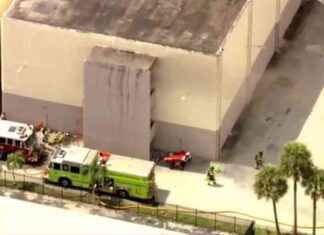Brooklyn’s little league baseball season is off to a typically slow and soggy start this year. Opening Day (April 1) was a washout, and in an apparent pre-emptive strike against further field erosion, the Parks Department decided to close all the diamonds in Prospect Park for the entire weekend. The sun returned the following Saturday, which also happened to be the beginning of the public school spring break, leaving several teams—including my son’s, which I coach—depleted of players.
But, hey, that’s baseball. To borrow a line from Bull Durham, sometimes you win, sometimes you lose, sometimes it rains. And in the case of the Prospect Park Baseball Association, sometimes half the team is on vacation.
Of course, juggling rosters and dodging raindrops is pretty standard fare when it comes to youth baseball. But this season has brought one unexpected twist: In January New York became the first city in the country to require its parks department to equip all youth baseball teams with automated electronic defibrillators (AEDs).
article continues below advertisement
Although rare—an estimate from a national high school association suggests that fewer than 25 otherwise healthy people younger than 30 die each year from sudden cardiac arrest (SCA)—the handful of tragic SCA deaths tends to spark big headlines. Causes vary, but incidents can be triggered by blunt trauma to the chest, a phenomenon often associated with baseball.
An AED is “a person’s best chance of surviving” a sudden cardiac arrest, said City Councilman Steven Matteo of Staten Island, one of the bill’s sponsors. “This legislation will dramatically expand access to AEDs, along with proper training, for thousands of Little League teams, free of charge.”
On that count, the council is batting around .300. As a result of the new law, this year’s league-supplied equipment bag was stuffed with worn-out catching gear, tattered bases, scuffed batting helmets, and a brand-new AED, a model that looks similar to one that retails for $895. That might help explain the program’s projected price tag of $6 million over six years—a cost critics no doubt will contend amounts to a pound of prevention for an ounce of cure. Matteo said he wants the devices to become “as ubiquitous as fire extinguishers.”
While the $12.95 I paid for the online training is not exactly “free,” I might have felt a bit more confident had the 15-minute instructional video included more than a minute on how to actually operate the defibrillator. On the upside, the devices are meant to be dummy-proof. Here’s hoping I never have to use one.
Brooklyn’s little league baseball season is off to a typically slow and soggy start this year. Opening Day (April 1) was a washout, and in an apparent pre-emptive strike against further field erosion, the Parks Department decided to close all the diamonds in Prospect Park for the entire weekend. The sun returned the following Saturday, which also happened to be the beginning of the public school spring break, leaving several teams—including my son’s, which I coach—depleted of players.
But, hey, that’s baseball. To borrow a line from Bull Durham, sometimes you win, sometimes you lose, sometimes it rains. And in the case of the Prospect Park Baseball Association, sometimes half the team is on vacation.
Of course, juggling rosters and dodging raindrops is pretty standard fare when it comes to youth baseball. But this season has brought one unexpected twist: In January New York became the first city in the country to require its parks department to equip all youth baseball teams with automated electronic defibrillators (AEDs).
Although rare—an estimate from a national high school association suggests that fewer than 25 otherwise healthy people younger than 30 die each year from sudden cardiac arrest (SCA)—the handful of tragic SCA deaths tends to spark big headlines. Causes vary, but incidents can be triggered by blunt trauma to the chest, a phenomenon often associated with baseball.
An AED is “a person’s best chance of surviving” a sudden cardiac arrest, said City Councilman Steven Matteo of Staten Island, one of the bill’s sponsors. “This legislation will dramatically expand access to AEDs, along with proper training, for thousands of Little League teams, free of charge.”
On that count, the council is batting around .300. As a result of the new law, this year’s league-supplied equipment bag was stuffed with worn-out catching gear, tattered bases, scuffed batting helmets, and a brand-new AED, a model that looks similar to one that retails for $895. That might help explain the program’s projected price tag of $6 million over six years—a cost critics no doubt will contend amounts to a pound of prevention for an ounce of cure. Matteo said he wants the devices to become “as ubiquitous as fire extinguishers.”
While the $12.95 I paid for the online training is not exactly “free,” I might have felt a bit more confident had the 15-minute instructional video included more than a minute on how to actually operate the defibrillator. On the upside, the devices are meant to be dummy-proof. Here’s hoping I never have to use one.
A version of this article appears in the April 17, 2017, print issue of Crain’s New York Business as “Playing it safe”.
Sign up for our FREE daily email newsletter. A summary of the day’s top business and political headlines from the newsroom of Crain’s New York Business.
More Newsletters ›
Our editors found this article on this site using Google and regenerated it for our readers.








